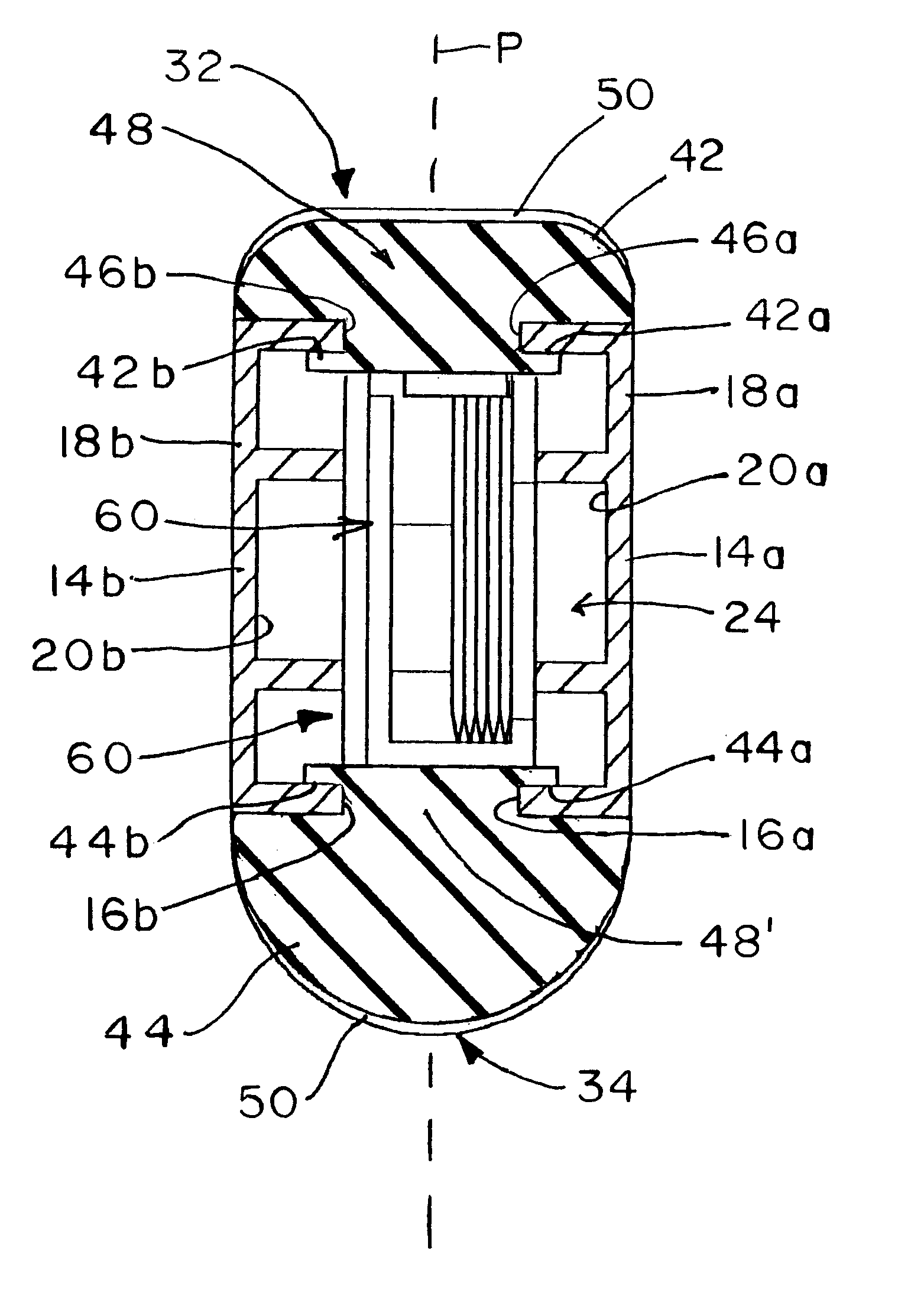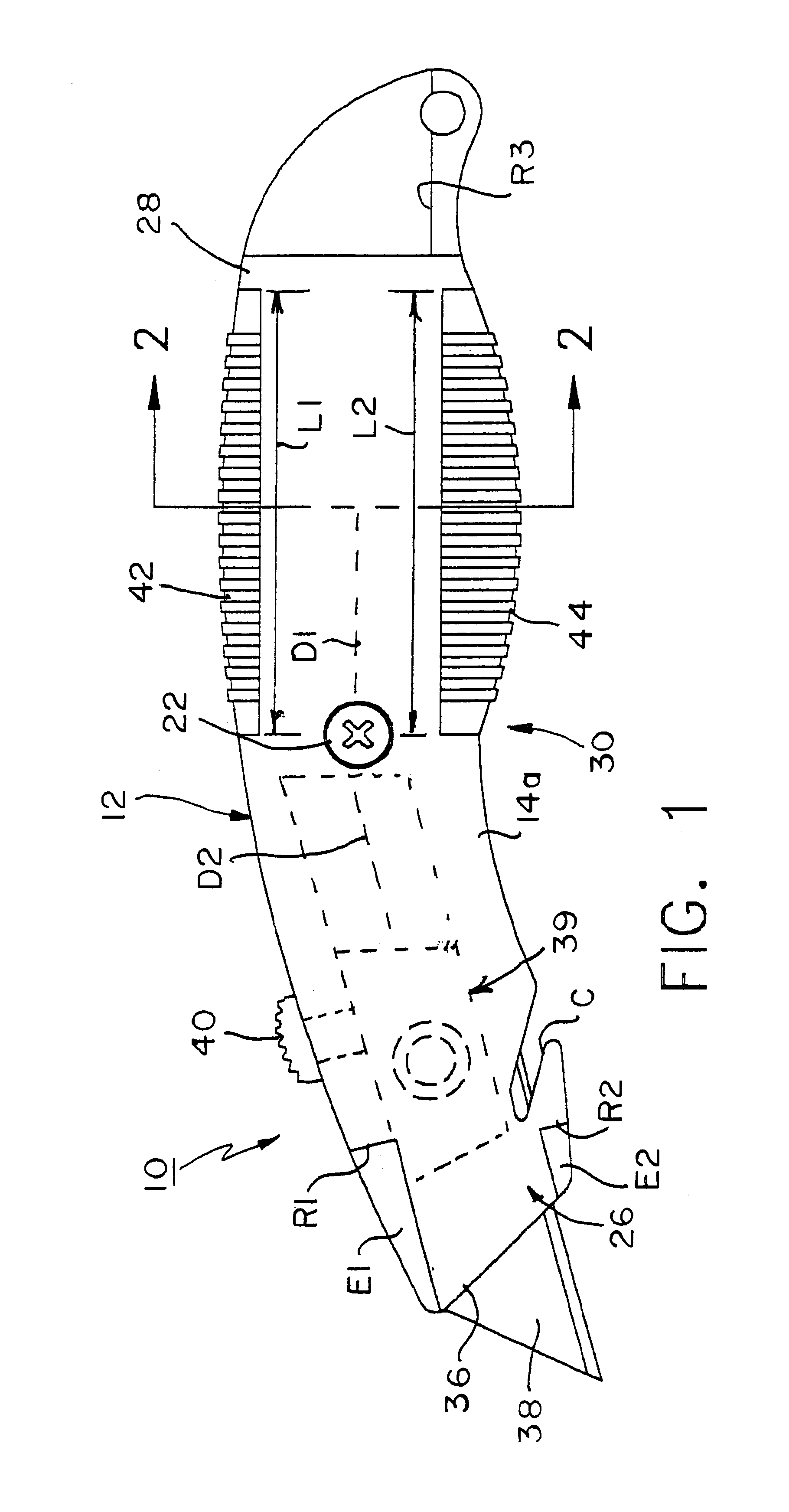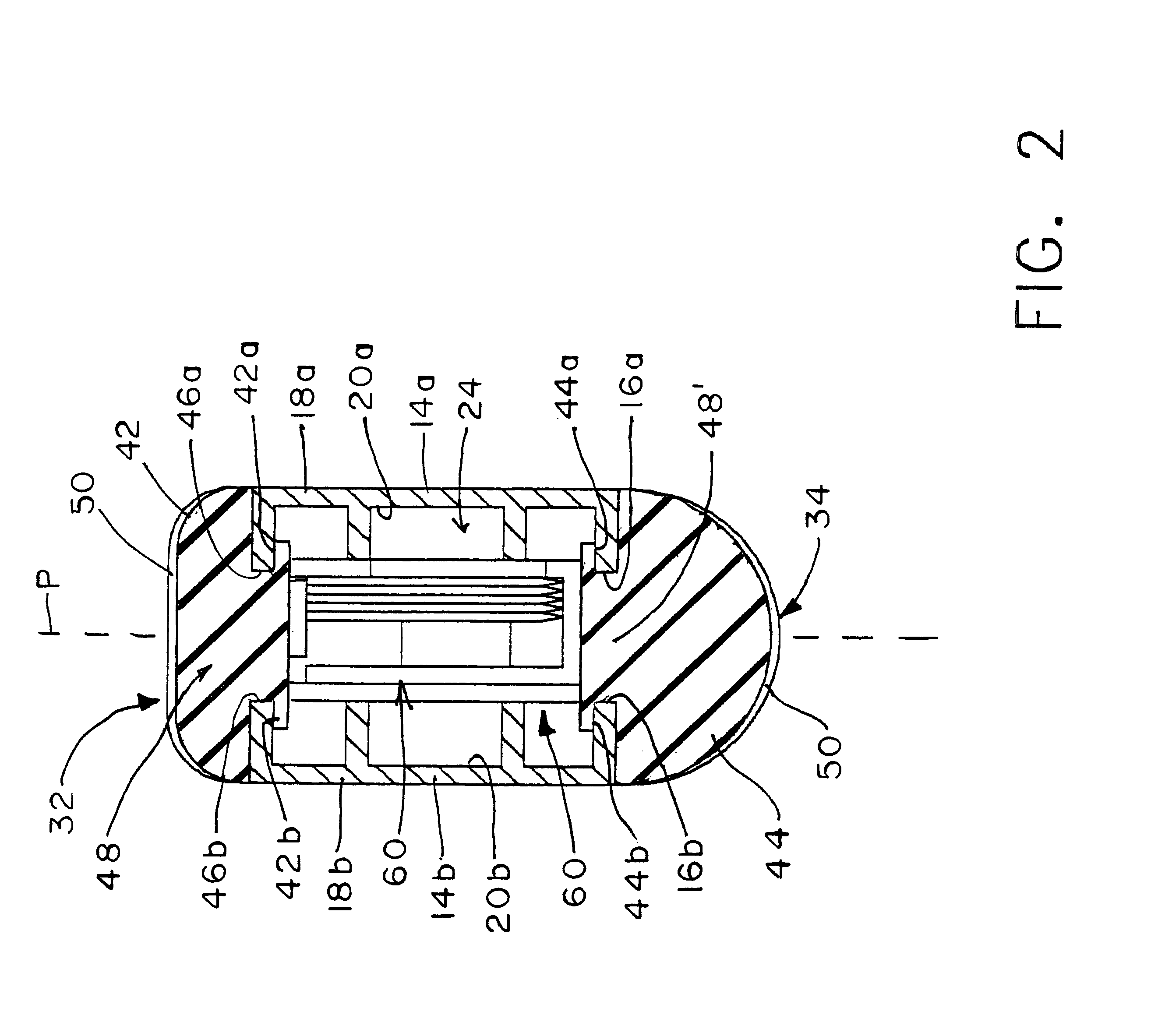Adjustable safety utility knife with slip resistant elements
- Summary
- Abstract
- Description
- Claims
- Application Information
AI Technical Summary
Benefits of technology
Problems solved by technology
Method used
Image
Examples
Embodiment Construction
Referring now to the Figs., in which identical or similar parts will be designated by the same reference numerals throughout, and first referring to FIG. 1, an adjustable safety utility knife in accordance with the present invention is generally designated by the reference numeral 10.
The utility knife 10 includes an elongated ergonomically shaped handle 12 formed of two elongate shell members 14a, 14b, each having a peripheral edge 16a, 16b (FIG. 2), respectively, and outer, generally convex surface 18a, 18b and an inner generally concave surface 20a, 20b, respectively. A suitable fastener, such as a transverse screw 22 (FIG. 1) is provided for fastening the shell members 14a, 14b to each other at the peripheral edges 16a, 16b along a parting plane P (FIG. 2) to form an elongated internal cavity or compartment 24. The handle 12 defines a front end 26, a back end 28 and an intermediate portion 30 suitable to be gripped by the user, also defining top and bottom surfaces 32, 34, respec...
PUM
 Login to View More
Login to View More Abstract
Description
Claims
Application Information
 Login to View More
Login to View More - R&D
- Intellectual Property
- Life Sciences
- Materials
- Tech Scout
- Unparalleled Data Quality
- Higher Quality Content
- 60% Fewer Hallucinations
Browse by: Latest US Patents, China's latest patents, Technical Efficacy Thesaurus, Application Domain, Technology Topic, Popular Technical Reports.
© 2025 PatSnap. All rights reserved.Legal|Privacy policy|Modern Slavery Act Transparency Statement|Sitemap|About US| Contact US: help@patsnap.com



